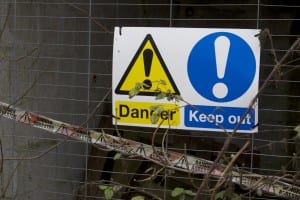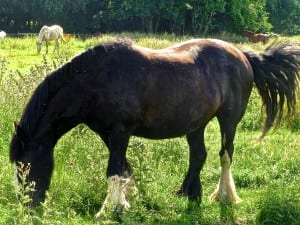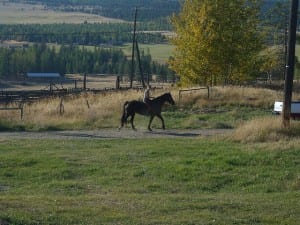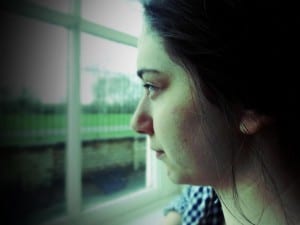The idea of having apples at the centre of our performance took storm this week. Verity and I joined forces, as we were both extremely interested in overwhelming a space with a mass of objects. We were directly influenced by two pieces of information found at the archives; the first was about 5000 leaflets being dropped over Lincoln during WW1 – the vast amount of paper falling from the sky all at once must have been visually incredible to encounter. The second was that the Grandstand had once been considered for the storage of casualties during WW1 – we immediately thought of the image portraying the vast amount of shoes left from the victims of Auschwitz piled up. We wanted to recreate a similar image, but through the use of apples.
We came across a small, cold corridor that led off of the RAF room in the Grandstand. One wall was lined with windows, the other misted glass that looked through into another room. The window frames and wooden panels created a multitude of little ledges. Immediately we could picture these ledges lined with apple cores with tags on, acting almost like storage/shelves. The windows reminded us of a greenhouse, and we could picture jars of progressively rotting apples creating a pathway down the corridor.
Just off of this corridor is a ladies toilets. After a while we felt that we were limited in ideas of performance in the corridor, so decided to use it as an instillation space. Using the sinks in the bathroom as a production line, we considered the idea of audience members coming in, washing the apples, de-coring them, and placing the core into a jar to add to the collection in the corridor.
Pearson suggests that “performance can provide a mechanism for enacting the intimate connection between personal biographies…and the biography of place” (2011, 2), so we decided to explore into how my personal story about my teeth could be embedded in our space. We recorded me talking about my experiences at the dentist, then played it from inside a closed cubicle. It was very moaning myrtle-esque! We wanted to blur the disciplinary perceptions of a public toilet (Pearson, 2011, 2) by using the privacy associated with toilet cubicles to create an intrusive performance. We loved the idea of the audience having to explore each toilet cubicle, eventually reaching the end one to find me sitting and staring longingly at an apple that they were holding, or even had on their heads.
References
Pearson, M. (2011) Why Performance? [pdf] Available at: <http://www.landscape.ac.uk/landscape/impactfellowship/peforminggeographieswarplands/toolkit.aspx> [accessed 26 April 2014]




